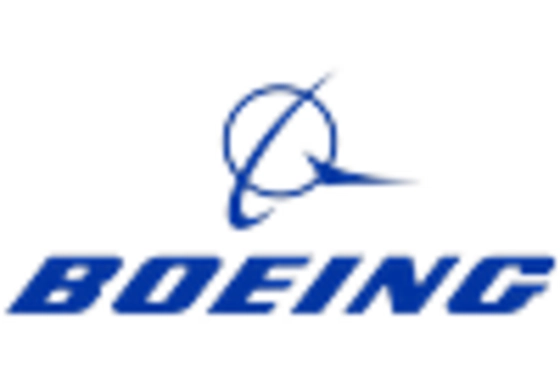Technological Innovations
Technological advancements play a pivotal role in shaping the Aircraft Oxygen System Market Industry. Innovations such as the development of lightweight materials and advanced delivery systems enhance the efficiency and reliability of oxygen systems. For instance, the integration of digital monitoring systems allows for real-time assessment of oxygen levels, improving safety protocols. The market is witnessing a shift towards more sophisticated systems that not only meet regulatory standards but also enhance operational efficiency. As airlines seek to reduce weight and improve fuel efficiency, the demand for cutting-edge oxygen systems is likely to increase, further driving the Aircraft Oxygen System Market Industry.
Growth of Military Aviation
The Aircraft Oxygen System Market Industry is also benefiting from the expansion of military aviation. As defense budgets increase in various countries, there is a growing emphasis on modernizing military aircraft, which includes upgrading oxygen systems. Military aircraft require specialized oxygen systems to support high-altitude operations and ensure pilot safety. The demand for advanced oxygen systems in military applications is expected to rise, driven by the need for enhanced performance and reliability. This trend presents significant opportunities for manufacturers within the Aircraft Oxygen System Market Industry, as they cater to the unique requirements of military aviation.
Increasing Air Travel Demand
The Aircraft Oxygen System Market Industry is experiencing growth driven by the rising demand for air travel. As more individuals opt for air transportation, airlines are expanding their fleets to accommodate this surge. According to industry reports, the number of air passengers is projected to reach 8.2 billion by 2037, necessitating advanced safety systems, including oxygen systems. This trend compels manufacturers to innovate and enhance their product offerings, ensuring compliance with safety regulations. The increasing number of aircraft in operation directly correlates with the demand for reliable oxygen systems, thereby propelling the Aircraft Oxygen System Market Industry forward.
Regulatory Standards and Compliance
The Aircraft Oxygen System Market Industry is significantly influenced by stringent regulatory standards imposed by aviation authorities. Compliance with safety regulations is paramount for airlines, which necessitates the installation of advanced oxygen systems in aircraft. Regulatory bodies, such as the Federal Aviation Administration (FAA) and the European Union Aviation Safety Agency (EASA), mandate specific requirements for oxygen systems, including performance and reliability standards. As these regulations evolve, manufacturers are compelled to innovate and enhance their products to ensure compliance. This dynamic creates a robust market environment, fostering growth within the Aircraft Oxygen System Market Industry.
Focus on Safety and Emergency Preparedness
Safety remains a top priority in the aviation sector, driving the Aircraft Oxygen System Market Industry. Airlines are increasingly investing in safety measures, including the implementation of advanced oxygen systems to ensure passenger and crew safety during emergencies. The emphasis on emergency preparedness has led to the development of more efficient and reliable oxygen delivery systems. As incidents of in-flight emergencies, such as cabin depressurization, continue to be a concern, the demand for effective oxygen systems is likely to rise. This focus on safety not only enhances passenger confidence but also propels growth within the Aircraft Oxygen System Market Industry.

















Leave a Comment